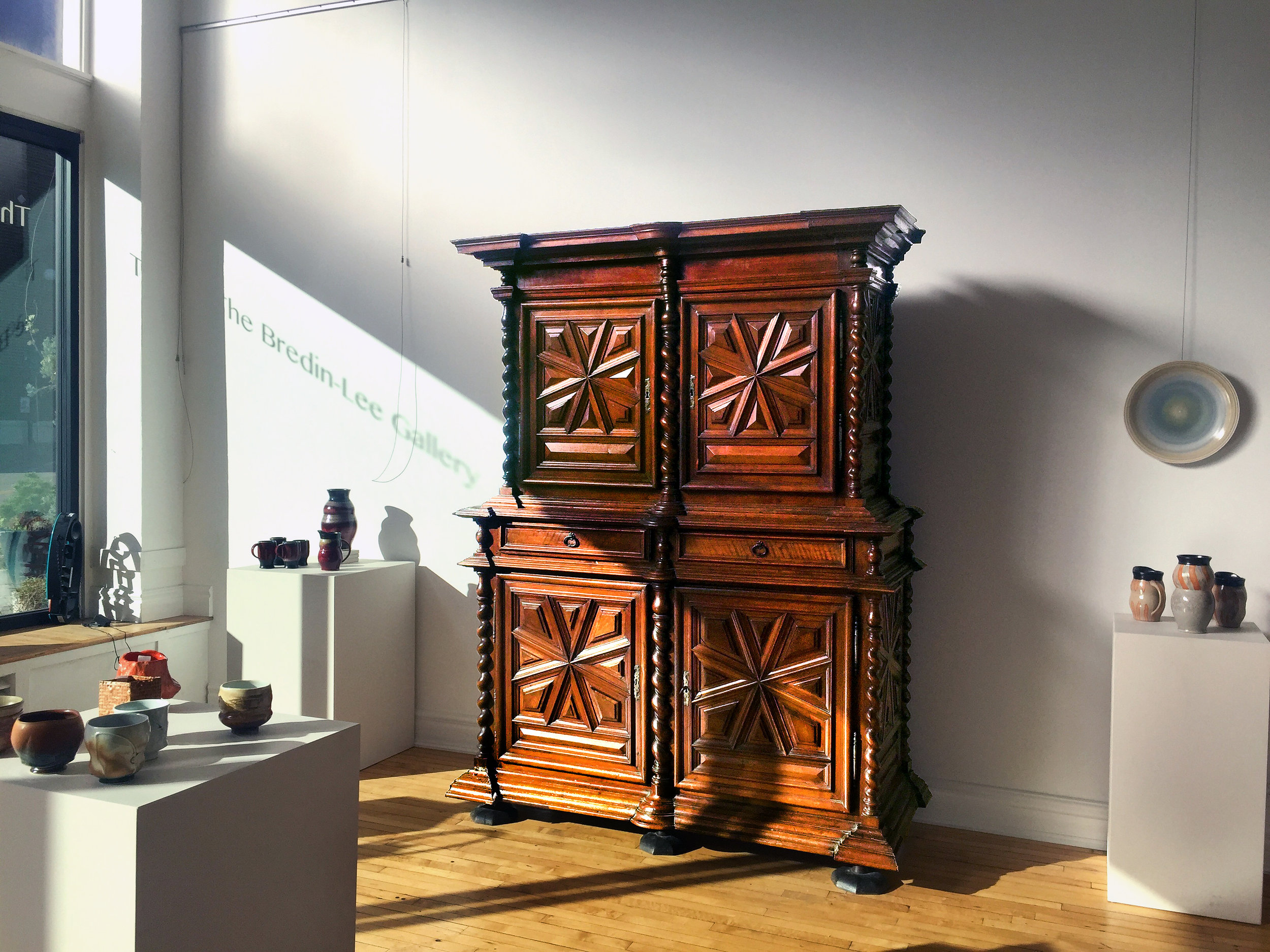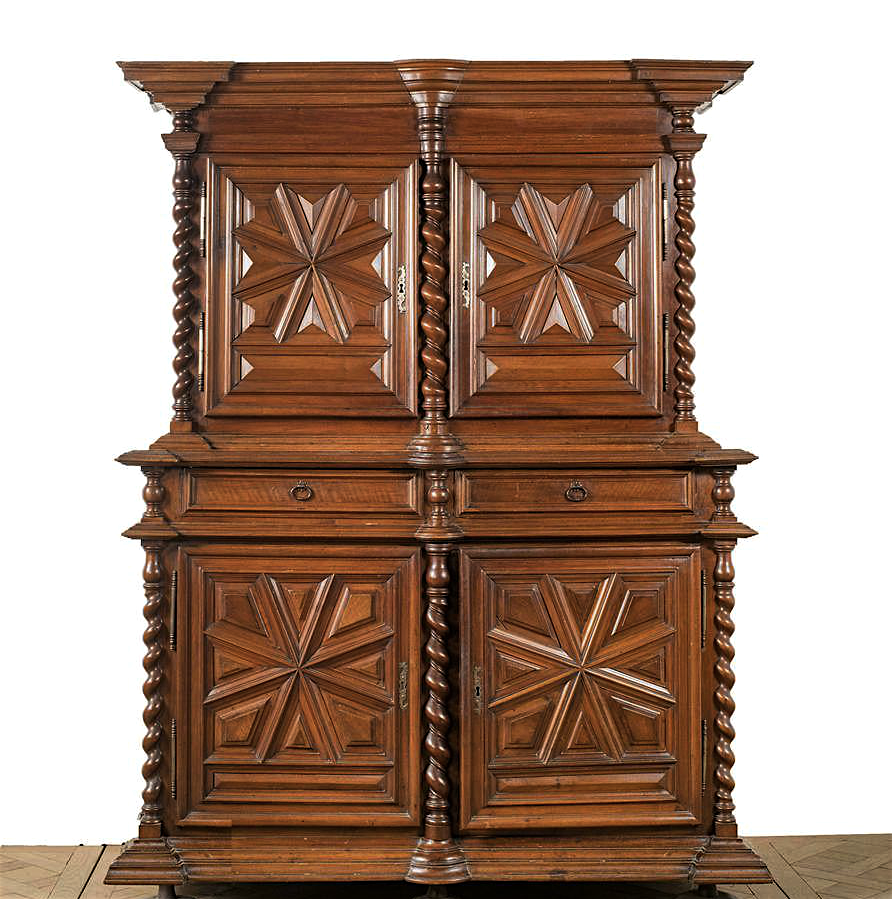17th C. Buffet (SOLD)
The seventeenth century begins in France in the wake of civil wars which had kept most furniture very mobile. Even as peace returned, society kept their habit of moving from castle to castle, and furniture to garnish every habitation and even every room was still rare. King Henri IV influences the national lifestyle by prohibiting the construction of fortified homes, moats, and by ordering that windows must be larger and less defensive. A return to comfort, luxury, and thus furniture that is not portable slowly occurs.
This presentation cabinet, from the second half of the 17th century, was necessary to build in two tiers just to enable its initial installation. The piece itself, the radial “cake point” motifs on its doors and sides, which present a rather lively optical illusion, and the spiraled “Jesuit columns” are emblematic of the Louis XIII style (which corresponds loosely to the reign of the monarch 1610-1643). This original French style, characterized by turning and the use of walnut and oak, evolved throughout most of the 17th century and was still produced rurally well into the 18th century.
The finesse of the hinges, the joinery, the width of structural boards, and traces of hand tooling (especially the back planks chiseled to fit into the frame) are all congruent with 17th c. manufacture. The hand forged nails on this buffet, with large and irregular heads, are also typical of the period.
The austere straightness, its sharp angles and absence of sculpture exemplify one end of the Louis XIII style. The purity of its profiles and proportions, in this case a majestic size, and the richness of the walnut, yield the piece’s artistic value. Furthermore, very precise restorations on the back spiraled columns and additions to the multileveled cornices are testaments to its value and the care it has received over time.
H: 94 in. L: 68.5 in. D: 30.5 in.
Myers & Monroe, LLC


